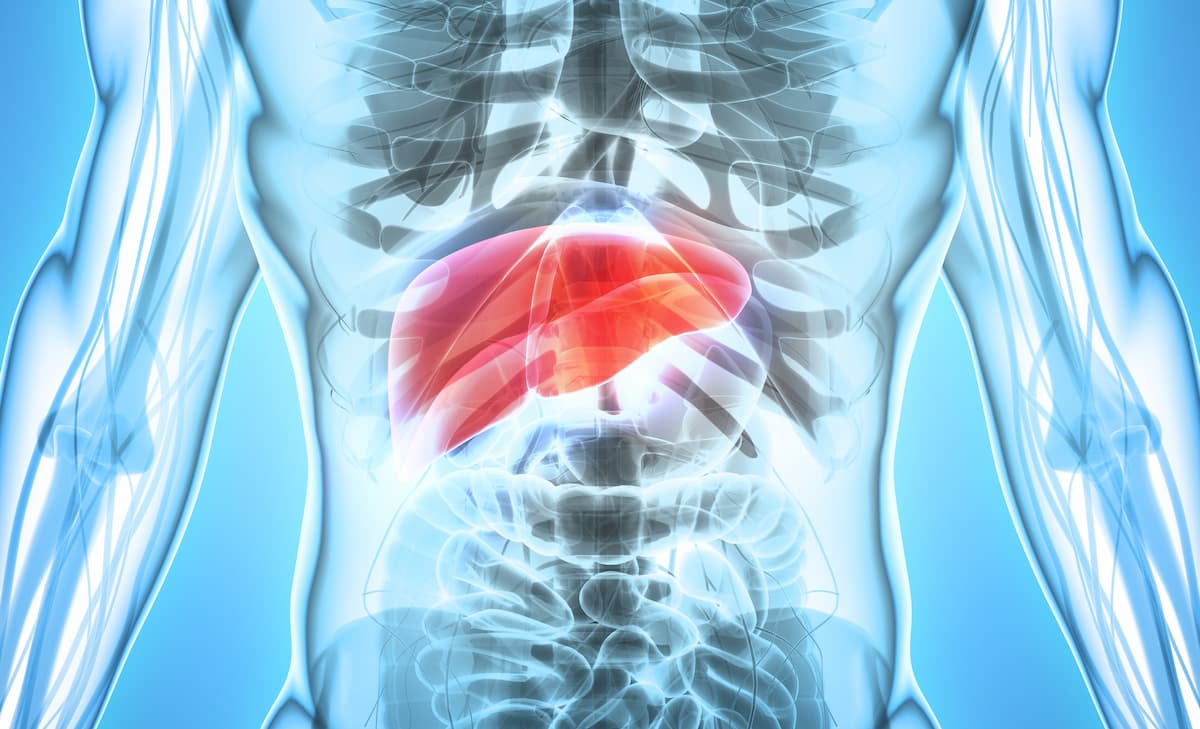HAIC Regimen Yields Long-Term Survival in Unresectable HCC
HAIC with oxaliplatin and raltitrexed produced a higher response rate vs other systemic therapy agents in patients with advanced hepatocellular carcinoma.
"This updated report confirms the antitumor efficacy and long-term survival benefits of HAIC with oxaliplatin plus raltitrexed in patients with intermediate- and advanced-stage unresectable HCC," according to the study authors.

Combining oxaliplatin with raltitrexed as hepatic arterial infusion chemotherapy (HAIC) demonstrated antitumor activity and long-term survival benefits among patients with unresectable hepatocellular carcinoma (HCC), according to 3-year updated findings from a phase 2 trial (ChiCTR-OOC-17014182) published in Hepatic Oncology.1
Across the per-protocol population, the objective response rate (ORR) was 54.3% (n = 19 of 35; 95% CI, 36.9%-71.6%) compared with 48.7% (n = 19 of 39; 95% CI, 32.3%-65.1%) in the intention-to-treat population. The ORR was 57.1% (n = 8 of 14; 95% CI, 27.5%-86.8%) among patients with Barcelona Clinic Liver Cancer (BCLC) stage B disease and 52.4% (n = 11 of 21; 95% CI, 29.1%-75.7%) in those with BCLC stage C disease; no significant differences in responses occurred based on BCLC stage (P = .782).
Data showed a median time to progression (TTP) of 6.8 months (95% CI, 5.0-8.6). Additionally, the study treatment elicited a median progression-free survival (PFS) of 6.5 months (95% CI, 5.4-7.6).
With a median follow-up of 41.0 months (95% CI, 36.7-45.3), the median overall survival (OS) was 11.2 months (95% CI, 7.7-14.7). HAIC produced a survival rate of 46.1% (SD, 8.7%) at 1 year, 30.7% (SD, 8.1%) at 2 years, and 30.7% (SD, 8.1%) at 3 years.
“Our trial’s efficacy was quite encouraging when measured against not only the use of oral sorafenib [Nexavar] but also HAIC regimens based on cisplatin or oxaliplatin, fluorouracil, and leucovorin [FOLFOX]. This implies that the treatment approach utilized in our trial may potentially offer a more effective alternative for patients with advanced HCC,” lead study author Shiguang Chen, PhD, from the Clinical Oncology School of Fujian Medical University at Fujian Cancer Hospital in Fuzhou, China, wrote with coauthors.1 “In conclusion, this updated report confirms the antitumor efficacy and long-term survival benefits of HAIC with oxaliplatin plus raltitrexed in patients with intermediate- and advanced-stage unresectable HCC.”
According to the study authors, the application of the oxaliplatin/raltitrexed combination in HAIC represented a significant advancement in the treatment of patients with liver metastases associated with colorectal cancer. They described how the use of HAIC may facilitate the direct delivery of high-concentration chemotherapy to the liver tissue bearing the tumor, thereby improving the antitumor effect.2
Investigators of this single-arm phase 2 study evaluated the therapeutic potential of oxaliplatin/raltitrexed among patients with intermediate- and advanced-stage unresectable HCC. Patients received oxaliplatin at 100 mg/m2 with continuous perfusion for 4 hours plus raltitrexed at 3 mg/m2 continuously perfused for 1 hour as part of each 3-week cycle.
The trial’s primary end point was ORR per RECIST v1.1 criteria. Secondary end points included TTP, PFS, OS, disease control rate, and adverse effects (AEs).
Patients aged 18 to 70 years with an ECOG performance status of 0 to 2, a Child-Pugh class of A or B, and a life expectancy of at least 2 months were eligible for enrollment in the trial. Those with any form of systemic therapy or locoregional treatment within 4 weeks of entry or evidence of extrahepatic spread of the disease were ineligible to enroll.
Most patients were men (87.2%), and the median age was 53 years (range, 25-70). Additionally, a majority had positive hepatitis B surface antigen expression (87.2%), an ECOG performance status of 1 (69.2%), a maximum tumor size of no more than 10 cm (61.5%), more than 3 HCC foci (56.4%), and BCLC stage C disease (66.7%). A total of 24 patients received prior locoregional therapy with transcatheter arterial chemoembolization, and 19 received subsequent treatment with PD-1 antibodies.
Investigators observed no new treatment-related AEs (TRAEs) in the 34-month period following the trial’s previous report. The most common grade 3 AEs included aspartate aminotransferase increase (12.8%), leukopenia (2.6%), thrombocytopenia (2.6%), alanine aminotransferase increase (2.6%), and abdominal infection (2.6%).
References
- Chen S, Yu W, Wang X, Liu W. Hepatic arterial infusion chemotherapy in patients with unresectble hepatocellular carcinoma: three-year survival update. Hepat Oncol. 2025;12(1):2516994. doi:10.1080/20450923.2025.2516994
- Francois G, Vincent J, Bengrine L, et al. Hepatic arterial chemotherapy with raltitrexed and oxaliplatin versus standard chemotherapy in unresectable liver metastases from colorectal cancer after conventional chemotherapy failure (HEARTO): a randomized phase‑II study. J Cancer Res Clin Oncol. 2019;145(9):2357-2363. doi:10.1007/s00432-019-02970-8